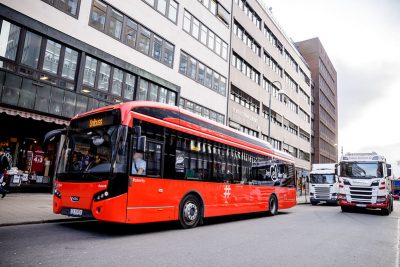Record-low temperatures from Oslo on the coast to Geilo in the mountains set off a barrage of insurance claims after the weekend. Frozen pipes and major water leaks caused problems, as did delayed or cancelled train and bus service.

Plumbers were busy responding to calls for help, after frozen pipes burst and caused lots of water damage. Norwegians are generally accustomed to winter and rough weather, conceded one insurance expert, but not temperatures as low as minus-31C in Oslo and minus-33.9C in Geilo after all the tons of snow that fell last week.
Insurance firm If Forsikring reported an avalanche of phone calls from home- and hytte-owners during and right after the weekend. Many had turned down the heat when leaving their hytte (holiday home) after the Christmas- and New Year holidays, to avoid high electricity bills, only to return and find water damage from burst pipes and water that then froze. An If spokesperson told newspaper Dagens Næringsliv (DN) that all rooms should retain indoor warmth at least above the freezing point, water systems should be turned off during long absences, and closet doors should be left open to improve circulation.
Meanwhile, Oslo’s bus system has been severely disrupted because batteries ran down much too quickly on the city’s new electric buses. It also took much longer to recharge them because of the bitter cold, putting as many as 100 buses out of service. That caused delays and cancellations that left residents shivering at bus stops.

On Tuesday, more trains on the line between Oslo and Kristiansand had to be cancelled as well. Simen Rode of the rail company serving the line said all the snow that piled up along tracks and the extreme cold caused various errors and damage that must be repaired.
More schools were forced to close this week because of frozen pipes and water leaks at Kjelsås and Morellbakken, for example. The large Marienlyst School in central Oslo also had to close because of heating problems.
Emergency crews also were called out to Norway’s national hospital in Oslo, Rikshospitalet, Tuesday morning. Newspaper Avisa Oslo reported water pipe damage and indoor flooding of the women- and children’s wards on the third and fourth floors, but no evacuations were necessary.
A sudden rise in temperatures in Northern Norway, meanwhile, was also setting off avalanche warnings. Several slides have already closed some roads and isolated small communities in Troms and Finnmarl, where driving conditions were hazardous. Some areas were even hit by heavy rain, turning already snow-covered roads into solid ice. More slides were expected in both Troms and Nordland.
There were also reports of power failures, delayed garbage collection and problems getting health care workers home to elderly patients. They were forced to use snowmobiles and special vehicles equipped with belts to operate on driveways and walkways that still weren’t cleared. Pet owners were advised to only take short walks with their dogs and leave cats inside.
The frigid weather was expected to ease later this week, warming up to as high as minus-1C heading into the weekend. That, though, can increase the danger of heavy icicles suddenly falling down from rooftops. Building owners were urged to clear roofs and set up warning signs along sidewalks below.
NewsinEnglish.no/Nina Berglund

